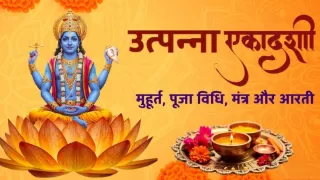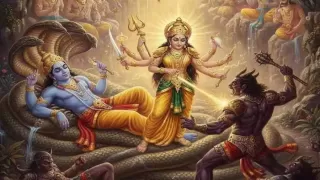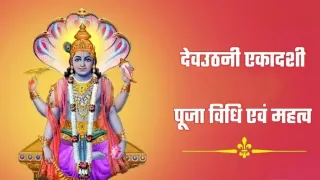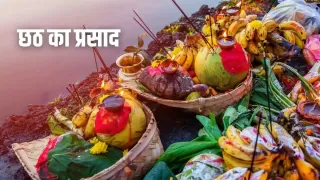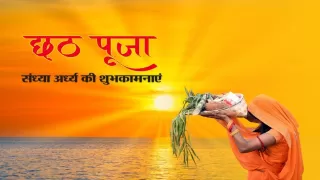Navratri, a vibrant festival that spans nine days, is dedicated to the worship of the nine avatars of Goddess Durga. Each day celebrates a different form of the Goddess, with Day 8 honouring Maa Mahagauri, a symbol of purity and tranquillity. This day holds profound spiritual significance for devotees who seek her divine blessings for peace, prosperity, and freedom from suffering.
Navratri 2024 Day 8: Dedicated to Maa Mahagauri

Image Source: Twitter
The story of Maa Mahagauri is steeped in devotion and transformation. According to Hindu mythology, she is an incarnation of Goddess Parvati, who underwent severe penance to win the love of Lord Shiva. Her unwavering devotion and intense austerities caused her complexion to darken. Touched by her commitment, Lord Shiva bathed her in the holy waters of the Ganges, restoring her original fair complexion. Hence, she is known as Mahagauri, where 'Maha' means great and 'Gauri' signifies fair or white.
Maa Mahagauri represents purity, wisdom, and serenity. She rides a bull and wears pure white clothes, symbolizing her radiant energy that dispels darkness and brings peace. Her four arms hold a trident, a damaru (small drum), and a lotus flower, while one hand offers blessings to her devotees.
Navratri 2024 Day 8: Puja Rituals
The worship of Maa Mahagauri on the eighth day of Navratri, also known as Durga Ashtami, is considered highly auspicious. The rituals are simple but carry deep spiritual meaning, focusing on devotion, cleanliness, and purity.
Steps for Performing the Puja:
- Clean the Puja Space: The area where the puja is performed should be thoroughly cleaned to create a sacred atmosphere. Set up an altar with an idol or picture of Maa Mahagauri.
- Offer White Flowers: Maa Mahagauri is associated with purity, so white flowers, especially jasmine, are considered her favourites. Place these at her feet as an offering.
- Chant Mantras: Reciting her mantras with devotion is believed to fulfil desires and remove obstacles. The mantra dedicated to Maa Mahagauri is: ॐ देवी महागौर्यै नमः॥ Om Devi Mahagauryai Namah॥
- Perform Aarti: Light a ghee lamp and perform the aarti while chanting the mantras and praising her divine qualities.
- Offer Prasad: Devotees prepare and offer white sweets such as coconut or milk-based delicacies as prasad, which is later distributed to family members as a blessed offering.
Prayers and Hymns for Day 8

Image Source: Twitter
During the puja, chanting prarthana (prayer) and stuti (hymns) dedicated to Maa Mahagauri helps invoke her divine grace. These prayers purify the mind and soul, granting peace and spiritual enlightenment.
Prarthana:
श्वेते वृषेसमारूढा श्वेताम्बरधरा शुचिः। महागौरी शुभं दद्यान्महादेव प्रमोददा॥ Shwete Vrishesamarudha Shwetambaradhara Shuchih। Mahagauri Shubham Dadyanmahadeva Pramodada॥
Stuti:
या देवी सर्वभूतेषु माँ महागौरी रूपेण संस्थिता। नमस्तस्यै नमस्तस्यै नमस्तस्यै नमो नमः॥ Ya Devi Sarvabhuteshu Maa Mahagauri Rupena Samsthita। Namastasyai Namastasyai Namastasyai Namo Namah॥
Significance of Maa Mahagauri
Maa Mahagauri symbolizes peace, purity, and compassion. Worshipping her helps devotees rid themselves of past sins, negative energies, and impure thoughts. She is believed to bestow peace and prosperity, making her worship integral to Navratri’s spiritual journey.
On Day 8, devotees also focus on fasting as an expression of devotion. By observing a fast, they purify their body and mind, enhancing their spiritual experience and connection with the divine. Additionally, Maa Mahagauri is associated with the planet Rahu, and her worship is believed to mitigate Rahu's malefic effects, bringing clarity and stability to life.
Navratri 2024 Day 8: The Color of the Day
Each day of Navratri is associated with a specific colour that holds spiritual significance. On Day 8, the colour of the day is pink, symbolizing hope, warmth, and universal love. Devotees are encouraged to wear pink attire while performing the puja to align with the day's vibrations and receive Maa Mahagauri's blessings.
Observing Durga Ashtami and Durga Navami

Image Source: Twitter
The eighth day of Navratri, also known as Durga Ashtami, is followed by Durga Navami on the ninth day. These two days are considered among the most powerful during the festival. Devotees across India celebrate with grand rituals, invoking the divine energy of the Goddess to eliminate obstacles and attain success in personal and professional endeavours.
Timing of the Durga Ashtami Puja in 2024
- Ashtami Tithi Begins: 11:30 AM on 11th October 2024
- Ashtami Tithi Ends: 1:04 PM on 12th October 2024
Also Read: Navratri 2024 Day 4: Maa Kushmanda Puja, Mantra, and Rituals Guide




















